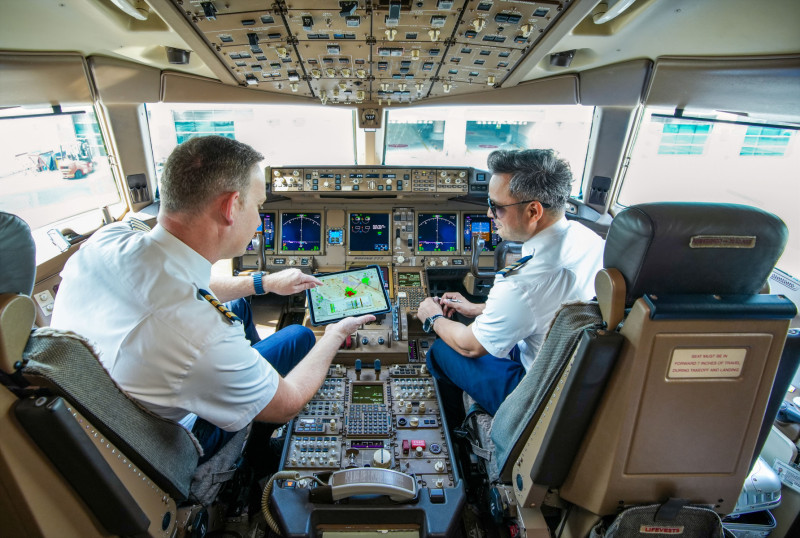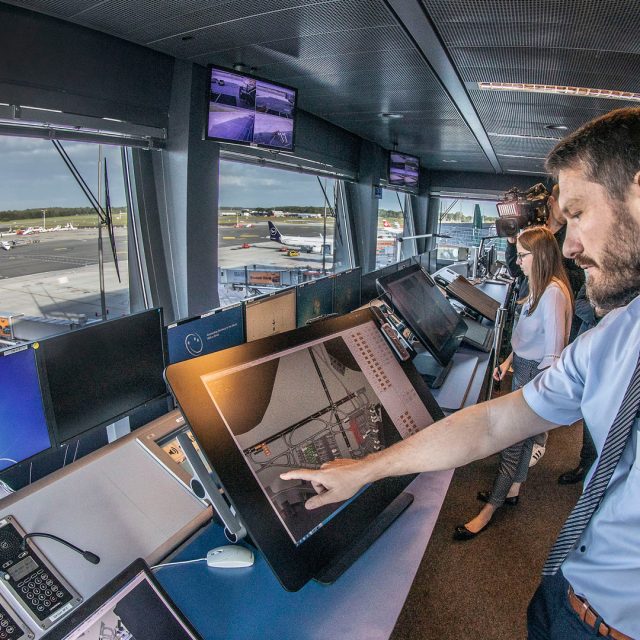Airlines are rolling out the latest “state-of-the-art” industry technologies in order to help counter turbulence.
The problem of turbulence hit the global headlines recently when a British citizen died during severe turbulence.
The Singapore Airlines flight encountered severe turbulence on its way from London to Singapore on May 21, leaving one person dead and several injured.
The flight was forced to land in Thailand and preliminary inquiries showed that the plane dropped 54 metres (178 feet) in less than five seconds.
However, the industry hopes two initiatives will help pilots better deal with such incidents in future.
The first is “Lido mPilot”, mobile navigation solution which aims to provide pilots with easy access to terminal charts, a “dynamically generated” enroute map and an “Airport Moving Map” (AMM).
An airline insider told this site, “Its data-driven, interactive maps, and the latest weather features relevant to each flight being operated ensure enhanced situational awareness and the most pertinent information for pilots.”
The second initiative is the International Air Transport Association’s (IATA) “Turbulence Aware Platform.”
This is a global, real-time detailed and objective information resource for pilots and aviation professionals to manage and mitigate the impact of turbulence on operations.
Turbulence is the main cause of passenger and crew injuries and leads to higher fuel usage.
The platform pools anonymized turbulence data from thousands of flights operated around the world.
The information generated from this data enables pilots and dispatchers to choose optimal flight paths, avoiding turbulence and flying at peak levels and altitudes to maximize fuel efficiency, ultimately reducing carbon emissions.
Emirates has become the first airline to integrate the IATA platform within the latest version of Lido mPilot.
A spokesman said, “Bringing these platforms together offers a wealth of data, combined with new technologies that make up-to-the-minute, highly accurate turbulence information and forecasts available for pilots.
“It equips them with the means to plot the best paths around affected areas for enhanced safety, efficient navigation, and optimisation of flight plans.”
The airline has equipped more than 140 aircraft with the required onboard software to automatically share turbulence reports with all airlines contributing data to the platform. All new aircraft joining the Emirates fleet over the course of the next few years, such as the Airbus A350 and Boeing 777-9, 777-8 and B787, will be enabled to participate in the programme.
Comment came from Captain Hassan Alhammadi, Divisional Senior Vice President, Flight Operations Emirates Airline, who said: “Actively participating in IATA’s Turbulence Aware platform and equipping our pilots with a complement of the latest industry technologies such as the mobile navigation solution Lido mPilot from Lufthansa Systems are part of our commitment to ensure operational safety, efficiency, and customer comfort on every flight.
“We’re proud to contribute data around turbulence and this will help build sophisticated industry knowledge to effectively manage turbulence and evolving weather patterns with even more precision.”
“This is only the beginning, and we are progressing with plans to integrate more cutting-edge technologies to elevate the flying experience even further, so our customers can enjoy smoother journeys.”
“Mitigating the adverse effects of turbulence is an industry wide challenge and obtaining accurate and live data is key in this endeavour.”
Frederic Leger, IATA’s Senior Vice President Commercial Products and Services,adds, “Cooperation between IATA Turbulence Aware, Emirates and Lufthansa Systems will further improve the quality and quantity of real time data made available to the industry, allowing for smoother and safer air travel for all.”
Andreas Medlhammer, Product Owner Pilot Charting Apps at Lufthansa Systems, said, “By integrating this data into Lido mPilot, we can increase safety, reduce fuel consumption and minimise passenger discomfort, ultimately improving their operational efficiency and customer satisfaction.”




